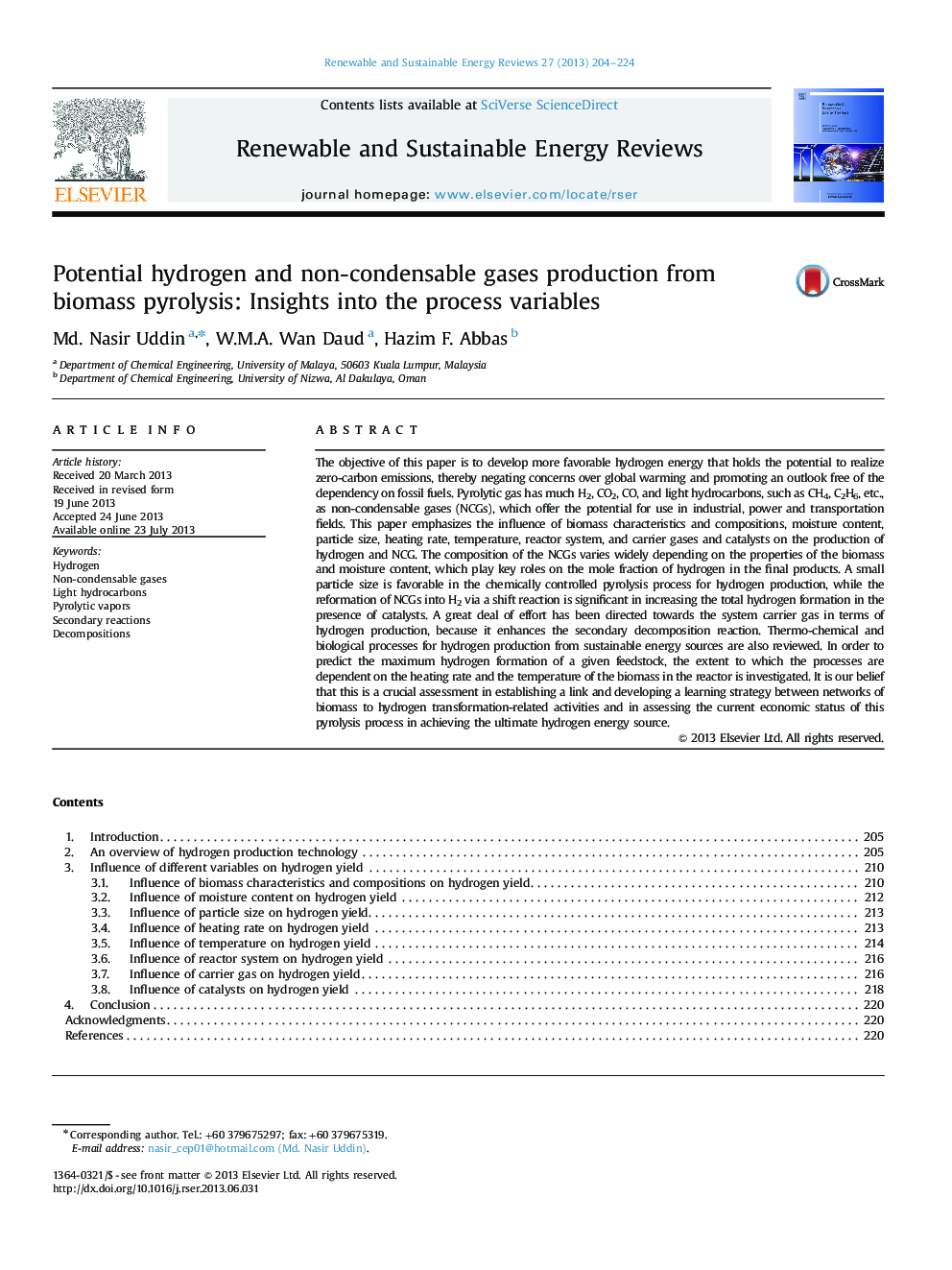| کد مقاله | کد نشریه | سال انتشار | مقاله انگلیسی | نسخه تمام متن |
|---|---|---|---|---|
| 8121226 | 1522358 | 2013 | 21 صفحه PDF | دانلود رایگان |
عنوان انگلیسی مقاله ISI
Potential hydrogen and non-condensable gases production from biomass pyrolysis: Insights into the process variables
ترجمه فارسی عنوان
تولید پتانسیل هیدروژن و گازهای غیر قابل انجماد از زیست توده پیلوریس: بینش به متغیرهای فرآیند
دانلود مقاله + سفارش ترجمه
دانلود مقاله ISI انگلیسی
رایگان برای ایرانیان
کلمات کلیدی
هیدروژن، گازهای غیر قابل جذب، هیدروکربن های سبک، بخارات پریلیتیک، واکنش های ثانویه، تجزیه،
موضوعات مرتبط
مهندسی و علوم پایه
مهندسی انرژی
انرژی های تجدید پذیر، توسعه پایدار و محیط زیست
چکیده انگلیسی
The objective of this paper is to develop more favorable hydrogen energy that holds the potential to realize zero-carbon emissions, thereby negating concerns over global warming and promoting an outlook free of the dependency on fossil fuels. Pyrolytic gas has much H2, CO2, CO, and light hydrocarbons, such as CH4, C2H6, etc., as non-condensable gases (NCGs), which offer the potential for use in industrial, power and transportation fields. This paper emphasizes the influence of biomass characteristics and compositions, moisture content, particle size, heating rate, temperature, reactor system, and carrier gases and catalysts on the production of hydrogen and NCG. The composition of the NCGs varies widely depending on the properties of the biomass and moisture content, which play key roles on the mole fraction of hydrogen in the final products. A small particle size is favorable in the chemically controlled pyrolysis process for hydrogen production, while the reformation of NCGs into H2 via a shift reaction is significant in increasing the total hydrogen formation in the presence of catalysts. A great deal of effort has been directed towards the system carrier gas in terms of hydrogen production, because it enhances the secondary decomposition reaction. Thermo-chemical and biological processes for hydrogen production from sustainable energy sources are also reviewed. In order to predict the maximum hydrogen formation of a given feedstock, the extent to which the processes are dependent on the heating rate and the temperature of the biomass in the reactor is investigated. It is our belief that this is a crucial assessment in establishing a link and developing a learning strategy between networks of biomass to hydrogen transformation-related activities and in assessing the current economic status of this pyrolysis process in achieving the ultimate hydrogen energy source.
ناشر
Database: Elsevier - ScienceDirect (ساینس دایرکت)
Journal: Renewable and Sustainable Energy Reviews - Volume 27, November 2013, Pages 204-224
Journal: Renewable and Sustainable Energy Reviews - Volume 27, November 2013, Pages 204-224
نویسندگان
Md. Nasir Uddin, W.M.A. Wan Daud, Hazim F. Abbas,
